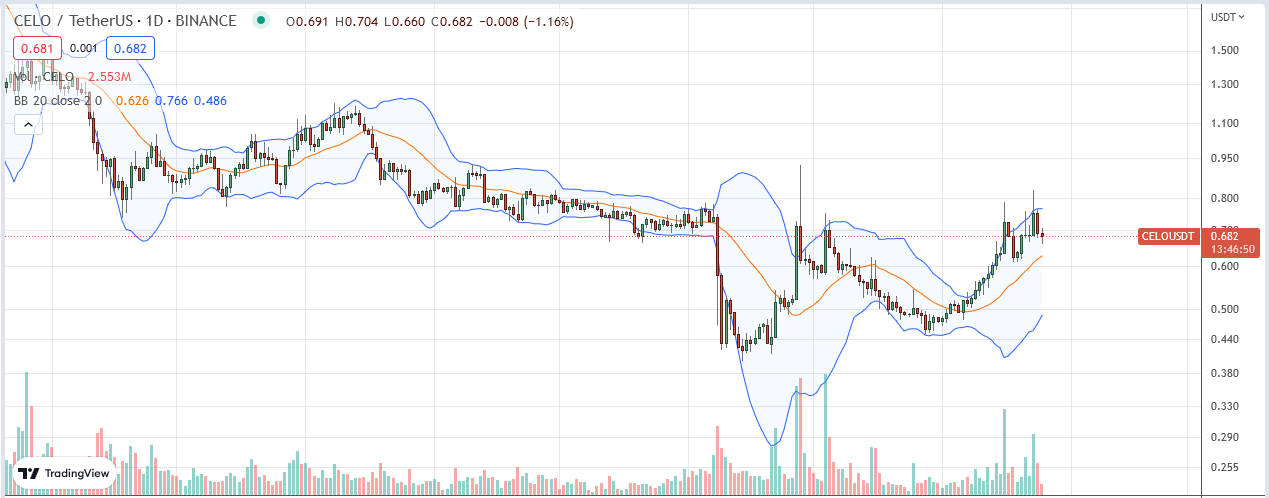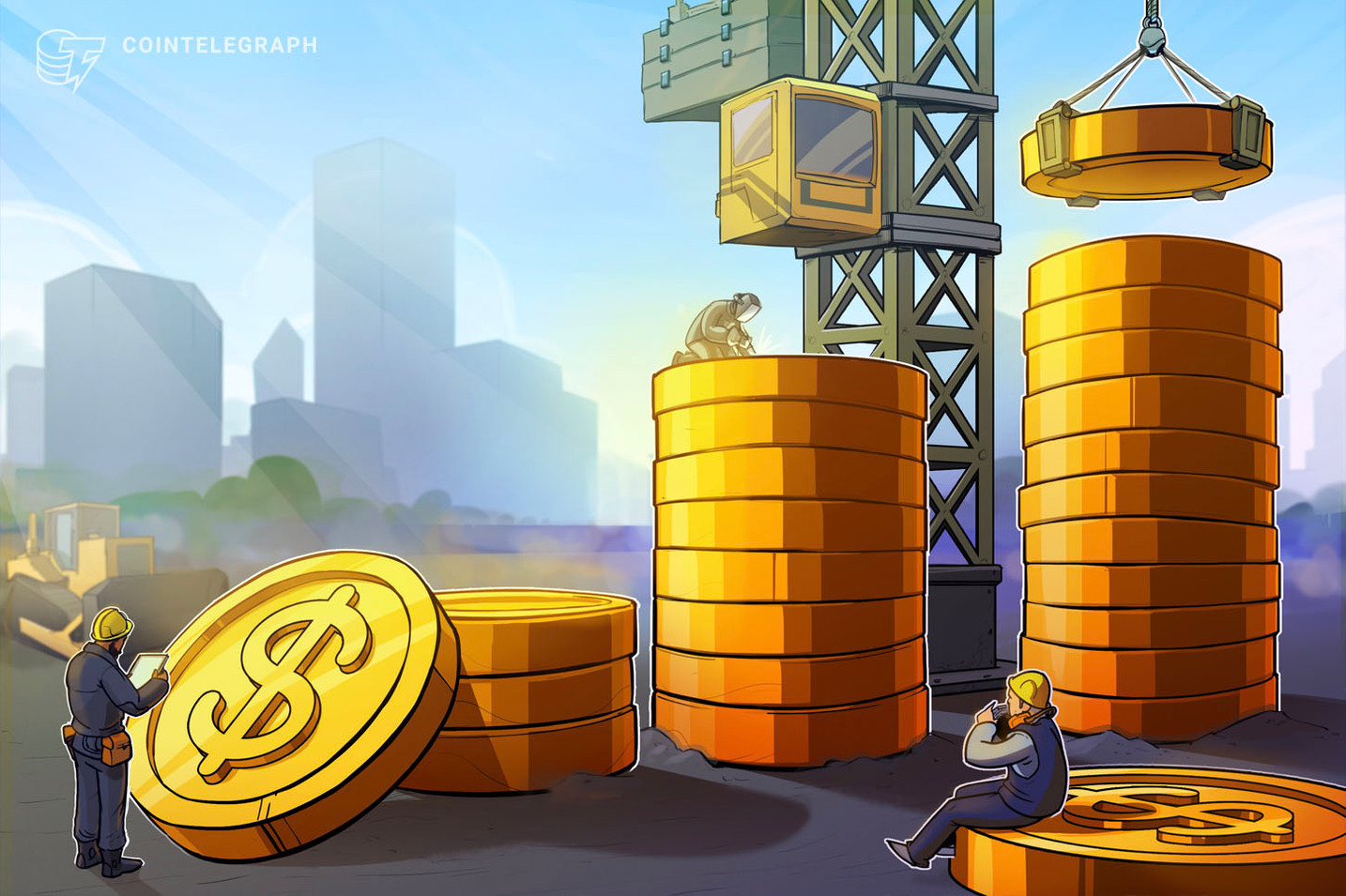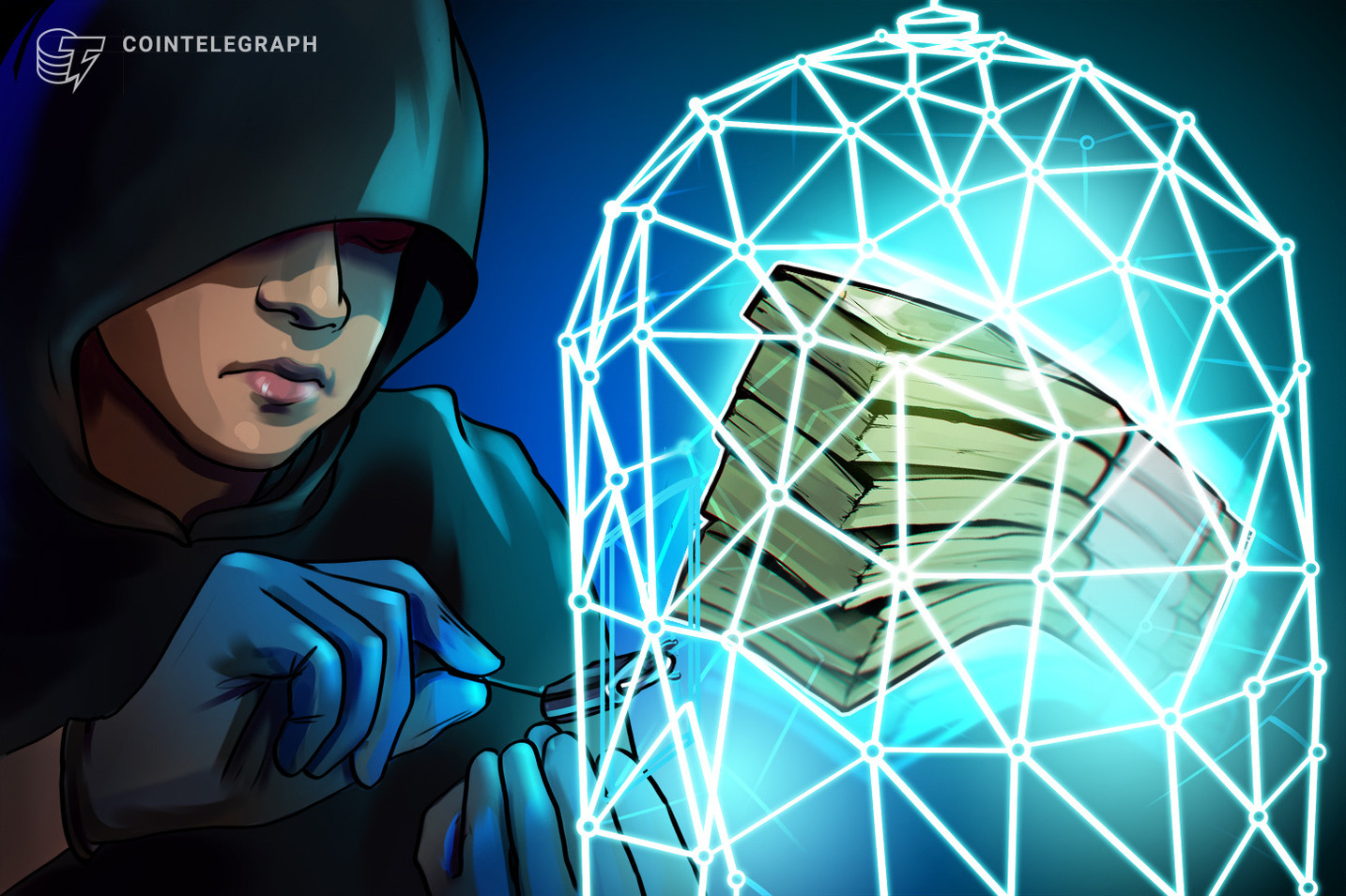Participants of Celo’s Founders in Residence program and developers on the Layer-1 protocol will receive guidance and services.
Celo president Rene Reinsberg explains why the protocol is optimizing for mobile

Celo president Rene Reinsberg believes Web3 adoption will require more block space and that Celo will be what the majority will choose on smaller screens.
Soulbound tokens power new identity solution on Celo blockchain

Masa Finance announced its deployment on the Celo blockchain with its new “Prosperity Passport” identity solution for users.
Celo Votes To Increase Minimum Gas Threshold
Celo, a mobile-focused smart contracting platform compatible with Ethereum’s virtual machine, is voting on a proposal to increase the network’s minimum gas threshold.
Voting for Celo Governance Proposal 0066 started today, Wednesday, January 18, and ends on Friday, January 27. As of the time of writing, the turnout stands at 2.6% of the total supply, with 6,840,826 CELO locked as votes.
Out of this, 6,840,116 CELO supports the proposal, 620 CELO is against the idea, and 90 CELO are voting to abstain. CELO is the native currency of the Celo proof-of-stake smart contracting platform based on the PBFT consensus mechanism.
The Celo Governance Proposal 0066
The proposal seeks to increase the minimum gas threshold to $0.001 for simple ERC-20 transactions. Unlike Ethereum, where gas fees must be paid in ETH only, in Celo, users can pay using ERC-20 currencies, not just CELO. Gas fees are paid to prevent Denial-of-Service (DDoS) attacks.
Like Ethereum, the gas fee structure in Celo adopts the proposals under EIP-1559. As EIP-1559 stipulates, there must be a gas price minimum that applies to all Celo transactions. This minimum fee applies regardless of the validator processing the transaction. It also fluctuates depending on demand. Celo has clarified that should the proposal pass, only the base fee will be impacted.
Under the Celo Governance Proposal 0066, the validator rewards from the gas fee will not be affected. Celo added that though the base fee might increase slightly, network activity would remain the same because “gas prices are very low, transactions are virtually free.”
Celo Will Benefit
The proposer laid out the rationale of this proposal, saying that the cost of a transaction for the broader Celo ecosystem carries extra dimensions than the gas spent. Like in other chains, all transactions posted on the network must be processed and immutably stored in the blockchain.
The current gas structure, the proposer said, doesn’t impact processing or the general state of the network. However, it could have severe ramifications in the long term. Changing gas fees would have added benefits for the ecosystem, leading to a higher minimum benefit. Consequently, they argue that this will warrant the long-term cost of the overall ecosystem.
Besides increasing the minimum benefits, the proposal will shield the network against spam attacks. By increasing the minimum gas fees threshold, any spamming activity would be more expensive.
The proposal reads:
“Stability and security of the network 1 Low gas prices allow actors to spam the network at virtually no cost. Currently, it would take time, until the minimum gas threshold increases substantially, to stop the attack. Increasing the minimum gas threshold ensures that such an attack is much more costly from the get-go, even if it is only sustained for a short period.”
CELO is trading at $0.682 when writing on January 25, 2023.

Feature image from Canva, Chart from TradingView
Celo Sees 20% Gains In Last Week As The Broader Crypto Market Retreats
CELO’s price is currently at $0.6101, with a trading volume of $44,775,558. It is currently ranked number 97 on CoinMarketCap. The trading volume has decreased by over 73% in the last 24 hours.
CELO shocked many market observers with a 33.51% price jump on Sunday and had a trading volume of $227,794,699.69. Although the token is still way off its all-time high of $10.68, it has shown signs of recovery.
2022 has been an eventful year in crypto circles, from XRP’s lawsuit with the SEC to the collapse of Celius and FTX. Pessimism has also driven the prices of crypto assets down as the fear factor increases.
CELO coin has defied the odds to go on a rally that has holders hopeful of potential gains. From its historical price movement, it remains to see how far this momentum can hold.
What Is Behind CELO’s Recent Price Upsurge?
CELO’s innovative cryptocurrency system gives the project an edge in the prevailing bearish cryptocurrency market. CELO targets increasing crypto use among smartphone users.
With the number of smartphone users rising daily, it is easy to understand why it is gaining in the market.
The proof of stake mechanism adopted by the project developers also makes it more energy efficient and future-inclined. The current value of the CELO network is directly proportional to efforts from network builders, the fanbase, and investors.
Also, Bitcoin has recently seen a slow and steady increase in its valuation. Judging from history and Bitcoin’s dominance, it affects the prices of other coins.
Macroeconomic factors also have a role to play since investors are more careful with their portfolios. The current economic meltdown in some regions of the world has also lengthened the crypto bear market.
CELO supports rave-of-the-moment projects that include NFTs and Web3 services. Experts insist that these projects will eventually launch CELO to importance.

CELO Possibly Going On A Bullish Run
CELO’s price has rebounded remarkably in the past few days. The price will likely continue on its bullish run for the short term.
CELO is trading slightly below the 200-day Simple Moving Average (SMA), showing a sell signal. It is also below the 50-day SMA and is still a sell signal from the indicator. The RSI value is currently 56.45. It indicates that the price is more likely to go bullish since it is above 40.
The MACD shows a tentative buy signal, with both the MACD and a signal line pointing upwards. The price has moved in a sideways trend, as observed in the candlestick pattern on the chart. It means that while a bullish run is possible, it will likely remain neutral for the time being.
The key levels on the chart are as follows: support: $0.4176, $0.4692, and $0.571559. The resistance levels are $0.7255, $0.7770, and $0.8793.
CELO will likely break through these resistance levels if buyer pressure holds. It also correlates with the price movement of the top ten cryptocurrencies as they experience gains.
Featured image from Pixabay and chart from TradingView.com
Celo ecosystem projects raise $77.3M in support of interoperability, ReFi

The Celo blockchain supports mobile-first DeFi payment infrastructure. Several companies building on the platform have received venture funding.
Moola Market attacker returns most of $9M looted for $500K bounty

The attacker has scored about a half-million dollar “bug bounty” after choosing to return a majority of the cryptocurrency they exploited from the Celo-based lending protocol.
Celo foundation proposes to deploy Uniswap V3 on its native blockchain

Celo aims to promote green use cases and rebalance its treasury with green asset-backed tokens with the help of Uniswap.
0x expands partnership with Celo to distribute $4.5M to DAO ecosystem

The two firms were part of a consortium of DeFi projects that founded the financial inclusion and education initiative DeFi for the People in August.
Ethereum alternatives and layer-1 solutions see steady gains in September

Multi-million dollar incentive programs and the ease of cross-chain transfers are boosting the value of L1 and L2-based tokens and raising the total value locked in their associated DeFi platforms.
Bitcoin bulls make a run on $45K after Twitter debuts crypto tipping

Bitcoin price rallied to $44,800 and takes aim at flipping the $45,000 level to support shortly after Twitter launched a new crypto tipping service.
After a 273% rally, this key indicator signaled that CELO price was overextended

Trading is “easy” when the trend is upward, but remember that in a bull market, cryptocurrencies take the stairs up and the elevator down.
CELO, Fantom and Keep3rV1 rally after liquidity mining programs launch

Newly launched incentive programs and protocol upgrades were followed by 50% rallies in CELO, FTM and KP3R.
Leading DeFi projects launch $100M global adoption initative

The initiative — built on the Celo ecosystem — identified the lack of inclusivity and accessibility in the traditional financial markets.
Deutsche Telekom to store Celo tokens on Coinbase Custody

Europe’s largest telecoms company by revenue has tapped Coinbase Custody for its Celo tokens.
Crypto app Valora raises $20M, becomes independent from Celo

Valora said it will use the funds for product development and create educational content “to get more people comfortable using cryptocurrencies.”
The USDC Stablecoin Will Soon Expand Its Reach To 10 More Networks
The second biggest stablecoin by market capitalization is already a multi-blockchain project. Soon, though, USDC will live almost everywhere. According to Coindesk, it will soon be available in, “Avalanche, Celo, Flow, Hedera, Kava, Nervos, Polkadot, Stacks, Tezos, and Tron.” That will bring the total to 14; since USDC is already functional in Ethereum, Algorand, Stellar, and Solana.
The biggest stablecoin, Tether or USDT, is only available in 8 of those. Currently, the most used stablecoin is Tron’s version of USDT.
Related Reading | Is USDC’s Billion Dollar Growth A Sign Crypto Smart Money Is Ditching Tether?
With that in mind, CENTRE said:
“We anticipate that USDC on these blockchain platforms and multichain protocols will further accelerate the use of the world’s fastest growing digital dollar currency.”
The consortium that runs USDC, CENTRE, is a joint venture between Coinbase and payments processor Circle. The information comes from, “a draft announcement from USDC administrator CENTRE obtained by CoinDesk.”

USDC market capitalization | Source: TradingView.com
What Is USDC And How Does It Work?
For this, we have to go back to the academy. Coinzilla informs us:
USDC is one of the fastest-growing stablecoins pegged 1 to 1 to the US Dollar.
What is more remarkable is that Circle, the company that developed the stablecoin, is actually holding the amount of money required for backing the USDC in circulation.
That’s definitely a shot at USDT. Tether’s audit and legal issues have been a topic of contention in the cryptocurrency community for a while now. Can they back all the Tether they’ve minted? A burning question that’s harder to answer than you’d think.
For what is worth, USDC’s April independent audit is on the public record and says:
-
USD Coin (“USDC”) tokens issued and outstanding less tokens allowed but not issued (218,807,037) and less blacklisted tokens = 14,697,267,257 USDC
-
US Dollars held in custody accounts are at least equal or greater than the USDC tokens outstanding at the Report Date and Time.
Back to Coinzilla’s academy, the stablecoin’s characteristics are:
In essence, USD Coin is an ERC-20 token that functions through the Ethereum Network. Nowadays, USDC transactions can also be settled through Algorand, Solana, and Stellar’s infrastructures.
Since the launch of USDC 2.0, the payment process is simplified, the gas fees being paid directly in USDC.
Related Reading | Circle’s Stablecoin USDC Passes Independent Audit, Fully Backed by USD
Stablecoins Are Supposed To Rule The USA in 2021
The official love affair between the US government and stablecoins started last January, when Jeremy Allaire from Circle announced that, “the largest US banking regulator with new guidance allowing US banks to use public blockchains and dollar stablecoins as a settlement infrastructure in the US financial system.” According to him, “Decentralized, permissionless, open source and internet mediated software is literally becoming the foundation for not just the US financial system but for the global economy.”
3/ The new interpretive letter establishes that banks can treat public chains as infrastructure similar to SWIFT, ACH and FedWire, and stablecoins like USDC as electronic stored value. The significance of this can’t be understated.
— Jeremy Allaire (@jerallaire) January 4, 2021
Recently, Randal K. Quarles, the Federal Reserve’s Vice Chair for Supervision, considerably raised the stakes:
In my judgment, we do not need to fear stablecoins. The Federal Reserve has traditionally supported responsible private-sector innovation. Consistent with this tradition, I believe that we must take strong account of the potential benefits of stablecoins, including the possibility that a U.S. dollar stablecoin might support the role of the dollar in the global economy. For example, a global U.S. dollar stablecoin network could encourage use of the dollar by making cross-border payments faster and cheaper, and it potentially could be deployed much faster and with fewer downsides than a CBDC.
Will stablecoins like USDC and USDT substitute the Digital Dollar project? Could they be an alternative to CBDCs? We’ll have to wait and see.
Featured Images by NeONBRAND on Unsplash - Charts by TradingView
Opera announces support for Celo stablecoins in its crypto wallet app

Opera has added Celo-based stablecoins to the list of supported assets in its wallet app.
Bitcoin hits $35K after Biden reveals infrastructure deal, Paraguay proposes BTC bill

Bitcoin price briefly traded above $35,000 as the stock market hit new highs and Paraguay aims to become the second country to adopt BTC as legal tender.
A16z taps Deutsche Telekom subsidiary as Celo validator

Deutsche Telekom’s T-Systems MMS is now a public validator on Celo via its Open Telekom Cloud infrastructure.





